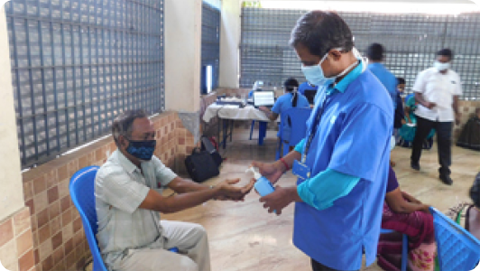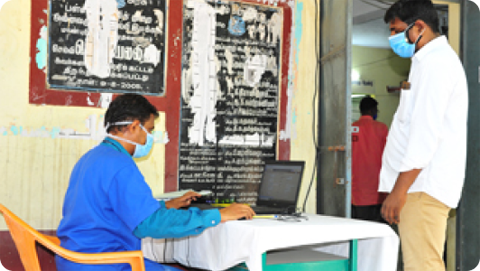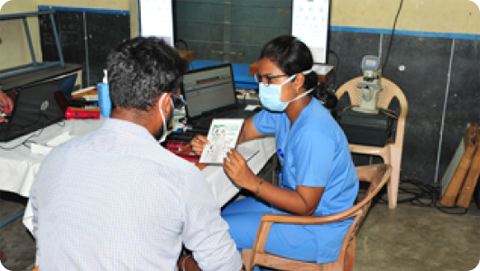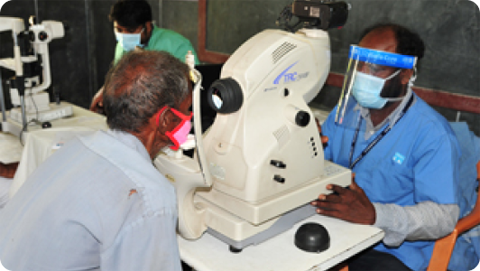Covid Protocols at Teleophthalmology Camps
Introduction
Due to Severe Acute Respiratory Syndrome (SARS) Coronavirus 2 (COVID-19) pandemic, eye camp activities have been re-structured since March 2020. Guidelines were given by the Government of India for eye camp activities like vision testing, refraction, optical dispensing, counseling, etc. Some of the activities at the camps were postponed or modified in the current pandemic situation such as the limitation on patients to be seen on a daily basis. We strictly follow social distancing for minimizing risk of exposure and need access to appropriate personal protective equipment (PPE), like gloves, masks and shields while examining patients. It is recommended that optometrists encourage their patients to remain silent during the examination and do rigorous sterilization of equipment after every examination. As conjunctivitis may be an early sign of Covid 19 that can be present, extra precautions have to be ensured while examining such patients.
Hand Hygiene
Optometrists and other employees and patients should perform hand hygiene using alcohol-based hand rub (minimum 20 seconds) and wear mandatory face mask.
Registration Protocol
Once the patient has entered the camp site they are then issued with identity cards. The temperature is then checked and noted in the patient identity card. The patients are strictly instructed to use hand sanitizer and wearing mask is mandatory. Once the patient adheres to the protocols, he/she will be sent to the registration counter
Patient Registration protocols – patient’s name, age and address are recorded in the Electronic Medical Records (EMR).


Visual Acuity and its Protocol
Optometrist should use face shield and hand sanitizer after seeing each patient. When testing visual acuity, avoid using occluder and request patients to close the non-testing eye with their palm after using sanitizer. A distance of at least 1 m from the patient is maintained while assessing visual acuity.
Near Vision
The near vision chart should be held with sanitized hands at appropriate distance instead of the patient holding the chart.
Precautions During Performing Refractions
The optometrist as well as the patient must not speak during the examination and optometrist must avoid touching the patient's head or face. Refraction can be performed using auto refractometer or a streak retinoscopy where mandated. Retinoscopy is performed after wearing face shield or at a distance of one arm and the refractive value can be calculated according to the distance. Trial frame and the metal rim of the lenses used should be cleaned with alcohol-based sanitizer after examining each patient. After seeing each patient, sanitization of retinoscope, pinhole, occluder, and trial lenses used in objective and subjective refraction is mandatory.
Slit Lamp Protocol
Once the patient has entered the slit lamp area, patient is instructed to sanitize his/her hand before being seated. The optometrist performs a diagnosis by wearing face mask and slit lamp shield for protection.


Fundus Photo
After slit lamp examination, every patient under goes dark adaptation, physiological dilatation and non mydriatic fundus examination .The retinal photography will help to rule out retinal abnormality and patient will be referred to the base hospital if any retinal findings.
Counselling
Once a patient has been diagnosed with a cataract or other ocular complications, it would be preferable to complete the discussion and minimize the patient mingling with other people. Camp coordinators/counsellors will provide referral to Sankara Nethralaya and will give clear instructions for patients.